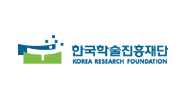Collaboration
[Under work - see this link in the interim]
Acknowledgements
LATEX version (escaped special characters):
We thank the RHIC Operations Group and RCF at BNL, the NERSC Center at LBNL, and the Open Science Grid consortium for providing resources and support. This work was supported in part by the Office of Nuclear Physics within the U.S. DOE Office of Science, the U.S. National Science Foundation, National Natural Science Foundation of China, Chinese Academy of Science, the Ministry of Science and Technology of China and the Chinese Ministry of Education, the Higher Education Sprout Project by Ministry of Education at NCKU, the National Research Foundation of Korea, Czech Science Foundation and Ministry of Education, Youth and Sports of the Czech Republic, Hungarian National Research, Development and Innovation Office, New National Excellency Programme of the Hungarian Ministry of Human Capacities, Department of Atomic Energy and Department of Science and Technology of the Government of India, the National Science Centre and WUT ID-UB of Poland, the Ministry of Science, Education and Sports of the Republic of Croatia, German Bundesministerium f\"ur Bildung, Wissenschaft, Forschung and Technologie (BMBF), Helmholtz Association, Ministry of Education, Culture, Sports, Science, and Technology (MEXT), Japan Society for the Promotion of Science (JSPS) and Agencia Nacional de Investigaci\'on y Desarrollo (ANID) of Chile.
UNICODE version (native UTF characters):
We thank the RHIC Operations Group and RCF at BNL, the NERSC Center at LBNL, and the Open Science Grid consortium for providing resources and support. This work was supported in part by the Office of Nuclear Physics within the U.S. DOE Office of Science, the U.S. National Science Foundation, National Natural Science Foundation of China, Chinese Academy of Science, the Ministry of Science and Technology of China and the Chinese Ministry of Education, the Higher Education Sprout Project by Ministry of Education at NCKU, the National Research Foundation of Korea, Czech Science Foundation and Ministry of Education, Youth and Sports of the Czech Republic, Hungarian National Research, Development and Innovation Office, New National Excellency Programme of the Hungarian Ministry of Human Capacities, Department of Atomic Energy and Department of Science and Technology of the Government of India, the National Science Centre and WUT ID-UB of Poland, the Ministry of Science, Education and Sports of the Republic of Croatia, German Bundesministerium für Bildung, Wissenschaft, Forschung and Technologie (BMBF), Helmholtz Association, Ministry of Education, Culture, Sports, Science, and Technology (MEXT), Japan Society for the Promotion of Science (JSPS) and Agencia Nacional de Investigación y Desarrollo (ANID) of Chile.
STAR Funding Agencies
STAR is supported by several funding agencies in countries on four continents, in addition to significant support from STAR member institutions. Here is a list of STAR funding agencies, with links to their web pages.
 |
Office of Nuclear Physics, Office of High Energy Physics, Office of Science, Department of Energy United States |
 |
National Science Foundation, United States |
 |
Frankfurt Institute for Advanced Studies, Germany |
 |
Institut National de Physique Nucleaire et de Physique des Particules, France |
 |
Fundação de Amparo à Pesquisa do Estado de São Paulo, Brazil |
| Ministry of Science and Technology, Russia |
|
 |
National Natural Science Foundation, China |
 |
Chinese Acadamey Of Sciences (CAS), China |
| Ministry of Science and Technology (MoST), China |
|
 |
Department of Atomic Energy(DAE), India |
| Department of Science and Technology, India |
|
 |
Grant Agency of Czech Republic, Czech Republic |
 |
Research Council of Fundamental Science & Technology (KRCF), Korea |
 |
Research Foundation, Korea |